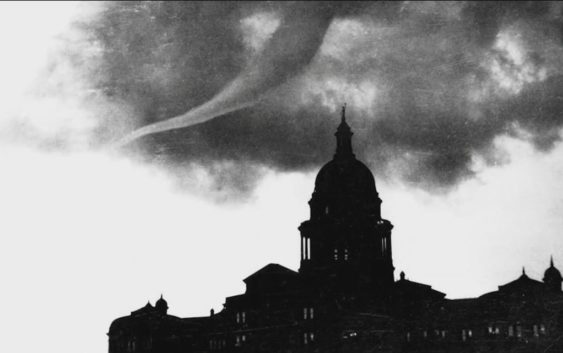- $37M drainage improvement project designed to combat flooding in NE Harris County
- Temporary bridges in Avery County at risk due to severe weather threat
- FEMA extends aid as Hurricane Helene recovery efforts surpass $360M
- Nearly every North Carolina wildfire caused by people, researchers say
- Weather IQ: How do wildfires ignite?
The Backstory: The day twin tornadoes devastated Austin

One hundred years ago this week, Austin experienced what some have called the worst weather disaster in the 20th century in the capital city.
AUSTIN, Texas — The sun rose on an unusually hot and humid day in Austin on May 4, 1922.
From his office on the University of Texas campus, the city’s weather observer, Fred Morris, noted that as day wore on, the sky remained clear but the temperature kept climbing. The barometer at the university showed that the air pressure was dropping, a sign of a potential storm.
By mid afternoon, thunder was heard in the city, lightning became more frequent, and the sky suddenly grew so dark that lights inside the Old Main Building at UT had to be turned on.
Then, northwest of the campus, students and faculty watched as a tornado snaked out of the storm clouds. An iconic photograph from that afternoon captured a menacing funnel cloud in the sky with the State Capitol building in the foreground.
The tornado touched the ground in West Austin, damaging what was then known as the Texas Blind, Dumb and Deaf Institute and destroying homes. It demolished cabins near the Deep Eddy Pool and destroyed a YMCA day camp. Several people were injured.
But the worst was yet to come.
A second tornado not attached to the twister in West Austin appeared east of downtown. It first touched down at the Texas State Cemetery, then moved across the Colorado River to a row of new homes in the Travis Heights neighborhood. Damage was extensive.
The funnel cloud barreled south to the St. Edward’s University campus where a student died and many were hurt when a dorm collapsed. Near the university, Penn Field –a former World War I training facility – became the next target as a manufacturing plant was turned to rubble. Several workers died there. Finally, the violent winds struck at Oak Hill where a family was killed as they sought shelter in their farm home.
The next day, the Austin Statesman newspaper reported that 13 (later revised to 12) people had died and 44 were injured. Damages totaled $700,000, which is nearly $12-million in 2022 dollars.
Some weather historians consider the twin tornadoes of May 4, 1922 the worst natural disaster of the 20th century in Austin, though some flood survivors in later years might disagree.
Still, a tragic day in the life of the capital city, and a reminder that then – as now –Texas weather in the month of May can turn violent quickly.
PEOPLE ARE ALSO READING: